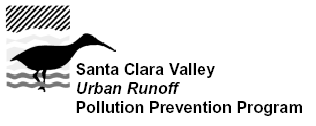Stormwater Runoff
- Vehicle Brake Pads
- Architectural Copper
- Pool/Spa/Fountain Algaecides
- Copper Pesticides
- Industrial Copper Use
- Soil Erosion
- Mobile Cleaning
- Vehicle Washing
- Vehicle Services
Discharges to POTWs
Shoreline Activities
Printing
Inks and chemicals which contain copper may be used in the printing industry. For example, the deep etch plating process used in lithography printing generates an acidic wastewater which can contain copper and/or other heavy metals. However, this process is quickly becoming obsolete because of cost and heavy metal waste stream disposal issues. Letterpress and flexography printing processes use copper for relief plates. As a result, copper-containing wastewater is generated during plate cleaning. While historically copper has been an ingredient in some inks used in flexography printing, the use of copper-containing inks is not common.
Stormwater Control Measures
Good housekeeping practices (e.g., proper container storage, clean-up of spills, sealing of floor drains, etc.) are generally the most feasible and effective measures for preventing pollutants from entering the storm drain system. It is unlikely that copper-containing chemicals and/or wastes will be introduced to the storm drain system if good housekeeping practices are maintained. Best management practices which address stormwater pollution from various facility activities or procedures are provided within the Site Source Control, Design, and Waste Management Section.
Wastewater Control Measures
Due to its limited
uses within the printing industry, copper discharges from printers to
the sanitary sewer are normally expected to be minimal. In addition, most
copper containing waste products from printers are generated in small
volumes and are more likely to be containerized and transported off-site
for disposal. Implementation of pollution prevention measures can prevent
or reduce loadings of copper-containing and/or other wastes to the sanitary
sewer. Wastewaters from certain printing and photo-processing activities
may be discharged to the sanitary sewer. However, municipalities typically
require permits and pretreatment and monitoring for these wastewater discharges
to the sanitary sewer.
Best Management Practices
Best management practices information sources include:
California
- City of San Jose - Best Management Practices to Reduce Pollution for Printing and Photoprocessing Operations - This information source provides BMPs to reduce loadings of metals, wastewater and other potential toxic pollutants from printing and photo-processing operations to the sanitary sewer and storm drain systems.
- Palo Alto RWQCP- Pollution Prevention Practices for Printers - This information source provides guidelines for water quality protection in order to minimize the discharge of metals and other potential pollutants from printers to the sanitary sewer and storm drain systems.
Organizations/Agencies
- Pollution
Prevention in the Printing Industry - This website provides an overview
of the printing industry and common pollution prevention projects implemented
within the industry.
